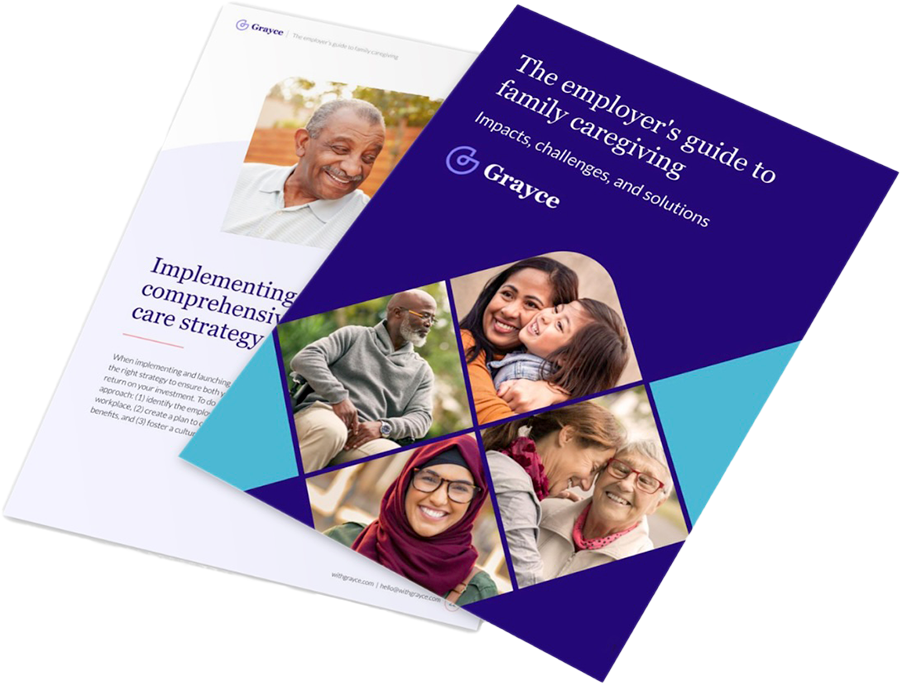The employer’s guide to family caregiving
Employee caregiving responsibilities are expanding at exponential rates as the number of U.S adults in the sandwich generation increases, and the availability and affordability of care decreases.
Grayce’s new guide explores these trends, their impacts on both employees and employers, and what organizations can do to better support the caregivers in their workforce while managing costs, and reducing absenteeism and attrition.

Employee caregiving responsibilities have nearly tripled over just a few years
In 2020, U.S adults with full-time jobs spent an additional 9 hours per week providing care to a loved one outside of work. By 2024, that number reached 26 hrs.1

Source(s): 1. Guardian.
Millennials comprise a large segment of the workforce’s growing sandwich generation
While most U.S. adults that care for both children and parents are Gen X, a growing number are millennials—underscoring the urgent challenge facing employers.

Source(s): 2. Pew Research, 3. Ibid.
Caregivers are leaving the workforce, a threat to the diversity of organizations
A disproportionate percentage of caregivers are from underrepresented groups, presenting a real risk to employers’ ability to foster DEI and a vibrant workforce.

Source(s): 4. Grayce, 5. Ibid.
Support for caregivers bolsters engagement and retention across employee populations
Regardless of their caregiver status, employees overwhelmingly believe that family care benefits are an essential component of a caring culture.
Source(s): 6. Grayce, 7. Ibid, 8. Ibid.
Learn more about how caregiving is impacting your workforce
Forward-thinking employers are addressing the root cause stressors of caregiving with programs offering community, personalized care plans, and hands-on, expert support. Explore additional insights from Grayce’s research:
